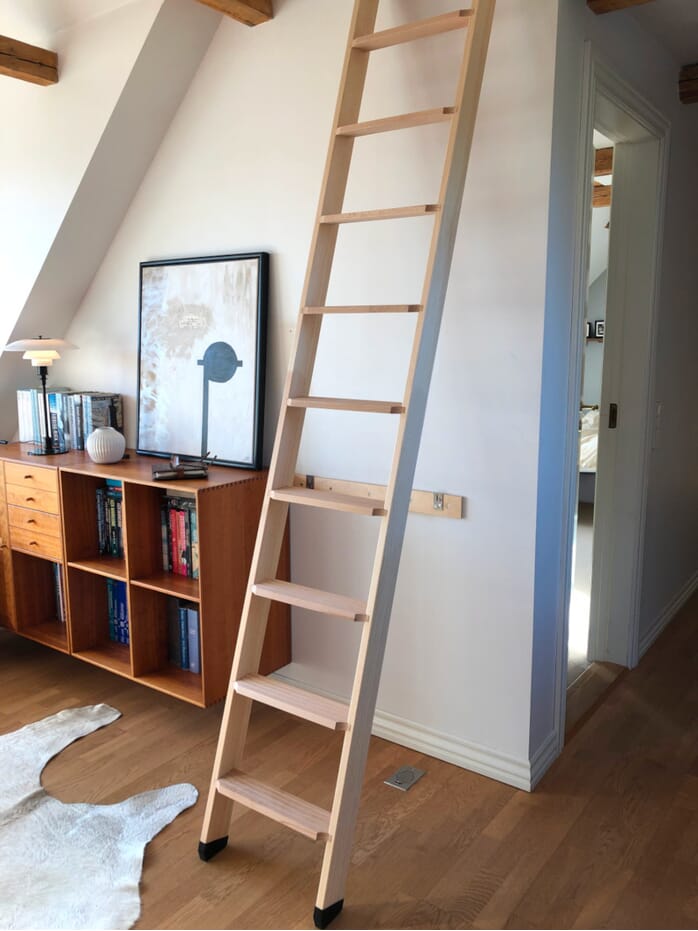Loft areas are an underused asset in several homes. With the proper loft ladder solution, you can turn awkward accessibility into a secure, fashionable, and efficient feature. This guide explains how to select and install modern wooden loft ladder that fit modern homes—covering key forms, safety standards, materials, and space-saving tips—therefore you will make a comfortable, future-proof choice.

Realize Your Place and Needs
Start with calculating the loft starting, floor-to-ceiling top, and the approval region for ladder deployment. Notice obstacles like mild fittings, opportunities, and furniture. Consider who can use the ladder and how often. Periodic storage accessibility calls for a compact design; frequent use advantages from sturdier, greater treads and handrails. A quick guideline: for roofs above 9 feet, prioritize telescopic or sectional programs designed for older reaches.
Choose the Proper Hierarchy Type
Various styles match different layouts and application patterns:
Telescopic: Perfect for restricted landings and minimal storage space. These ladders collapse into themselves and usually function managed retraction for safety.
Folding (Three-Section or Scissor): Common for standard limit heights. They tuck perfectly into the loft hatch and use easily; contemporary designs contain spring-assisted mechanisms.
Sliding/Sectional: Great for greater openings and weightier loads. Parts fall out in collection, offering stable stability.
Stair-Ladder Hybrids: Most readily useful for frequent use or loft rooms. They offer deeper treads and a gentler pitch, improving comfort and safety.
Hint: If your loft increases as a workspace or guest space, look at a hybrid with handrails and a 50–70 stage message for simpler climbs.
Select Sturdy, Contemporary Resources
Materials effect weight, durability, and aesthetics:
Aluminum: Light, corrosion-resistant, and affordable. Great for low-maintenance homes.
Steel: Highest energy and longevity; search for powder-coated finishes to avoid wear.
Engineered Timber: Warm look that blends with interiors. Choose designs with anti-warp therapies and non-slip treads.
Composite: Includes energy and minimal fat; good for wet or coastal environments.
For a contemporary look, set flat dark hardware with pale wood treads, or opt for applied aluminum to match minimalist interiors.
Prioritize Safety and Conformity
Check always the optimum fill rating— aim for 300 lb or older for family versatility. Look for anti-slip treads, integrated handrails, locking systems, and controlled lineage functions to stop unexpected drops. Ensure the hatch is insulated and self-closing wherever required. Validate submission with applicable making recommendations in your area, particularly when the loft is really a habitable space.
Seasoned tip : Add motion-activated LED pieces along the hatch figure to enhance presence without clutter.
Enhance for Energy Performance
The loft hatch is a frequent source of temperature loss. Choose insulated covers with retention seals to prevent drafts. If replacing a preexisting hatch, deploy weatherstripping and an insulation cover. Contemplate fire-rated hatches for included defense in multi-story homes.
Plan a Clean Installment
If you are DIY-inclined, validate the joist direction and spacing before enlarging an opening. Bolster framing about the hatch to distribute masses evenly. Use hidden nails and low-profile hinges for a seamless look. For complicated adds or roof heights above 10 feet, hire an expert to make sure right alignment and safe operation.
Maintain for Long-Term Stability
Inspect hinges, rises, and locking hooks twice a year. Lubricate going pieces with a dry silicon spray in order to avoid residue buildup. Tighten fixings and check always tread grip. Change used rubber legs to safeguard floor and maintain traction.
Make It Element of the Design
Modern loft ladders can be a style feature, not only a utility. Contrast finishes (e.g., dark steel with oak treads), arrange the hatch with limit lines for symmetry, and incorporate subtle recessed pulls. For small apartments, color-match the hatch to the threshold for a clear, flush appearance.

Ready to uncover the complete possible of one's loft? Evaluate your place, select the right hierarchy form and products, and program an energy-efficient, secure installation. With a smart choice and appropriate maintenance, your loft hierarchy may add value, purpose, and fashion to your home for decades to come.
